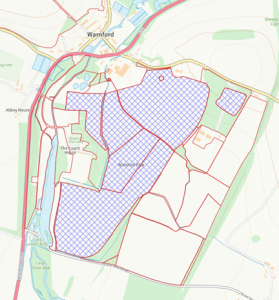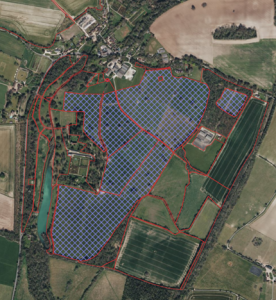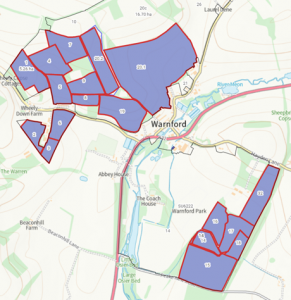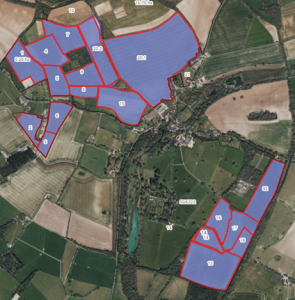Warnford Park Estate
The vision is to restore around 280 hectares of arable land to a range of habitats including species rich grassland, parkland, wetlands and woodland, potentially one of the largest new woodlands in England for over 70 years.
The aim is for restoration land to enhance wildlife, landscape, community, access and to store carbon.
Contact the provider
Mark Alden, South Downs National Park Authority Consultancy Team
Email: ReNatureCredits@southdowns.gov.uk
Tel: 07850 570297
Location
Within the chalk stream valley of the River Meon lies the Warnford Park Estate with Warnford Park at its centre as a designed parkland landscape.
The Meon Valley is a broad, branching valley carved from the chalk downs and indented by dry valleys and coombes to produce smoothly rounded valley sides.
The valley sides are shallow and well drained and the calcareous silty soils support intensive arable cultivation and pasture on the shallower slopes, while the steeper slopes feature calcareous grassland, scrub and woodland.
The clear, chalk river flows in a narrow floodplain that is characterised by small permanent pastures divided by hedgerows, wet woodland, water meadows, and open water, all of which are of great ecological interest.
Remnant features relating to water management and agricultural/industrial use of the river include fragments of water meadows, weirs and mill ponds, fish farms, and trout lakes.
The mill at Warnford is evidence of the 19th century papermaking industry.
The presence of designed landscapes, for example Warnford Park, provides evidence of gentry houses and landscape parks of the wealthy population of the past.
Habitat and species
The area is rich in bird species such as Skylark and Barn Owl in the farmed area, while veteran trees in the parkland harbour a number of bat species such as the Daubenton’s bat.
The River Meon itself holds Brown Trout, Brook Lamprey and is home to Water Vole and Otter too.
Background
Warnford Park was originally known as St John’s House; a medieval manor house built in 1209, its remains are a Scheduled Ancient Monument and can be seen today behind the parish church of ‘Our Lady, Warnford’ which originates from the Saxon period and was founded by St Wilfred.
The surrounding parkland was once known as Belmont when the 11th Earl of Clanricarde purchased the estate in 1754.
The famous English landscape architect Lancelot ‘Capability’ Brown was involved in improving the estate landscape with the River Meon forming a long lake to the south of the park
The Sellick family have been living and farming the estate for the past 28 years and have been active in maintaining and improving the conservation of the land.
For them the place is home and something special of which they are the custodians.
Restoration Plan Maps
The Warnford Park Estate’s restoration plan areas for Biodiversity Net Gain (BNG) and Nitrates are set out in the following maps.
Biodiversity Net Gain Phase 1
Nitrate Mitigation Phase 1
Our role in BNG
The SDNPA has a financial interest in particular Biodiversity Net Gain (BNG) schemes. This includes the Warnford Park Estate BNG scheme.
We receive remuneration for consultancy and support services offered to certain BNG schemes by way of a % commission on the revenue generated through sales.
This commission is calculated to cover our costs only and does not alter or inflate the cost of the BNG Units to potential purchasers.
For more information regarding these arrangements please view our role in BNG.




